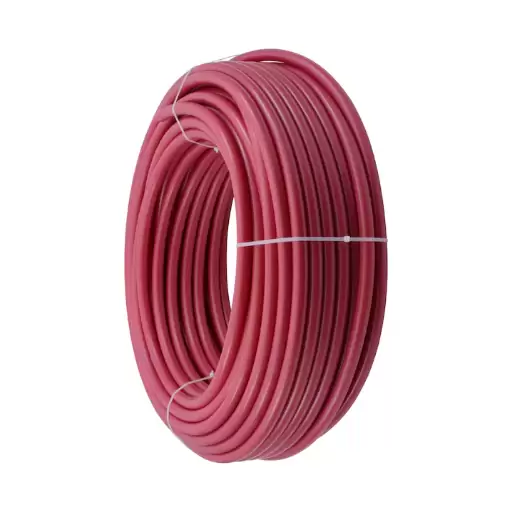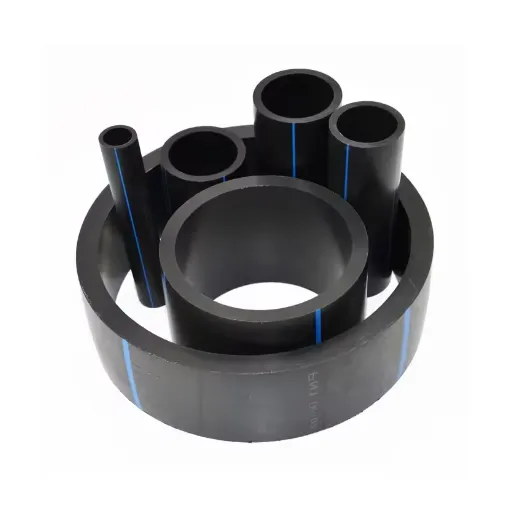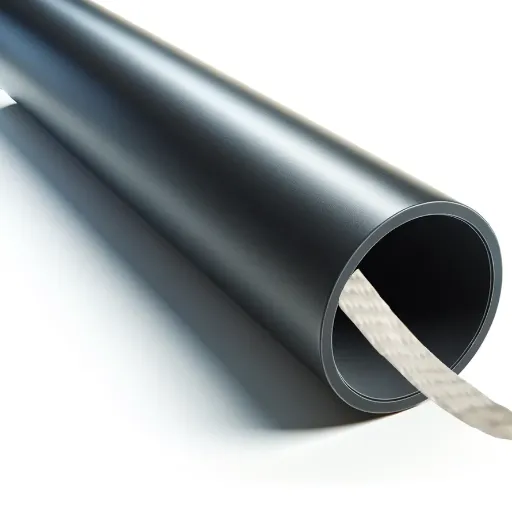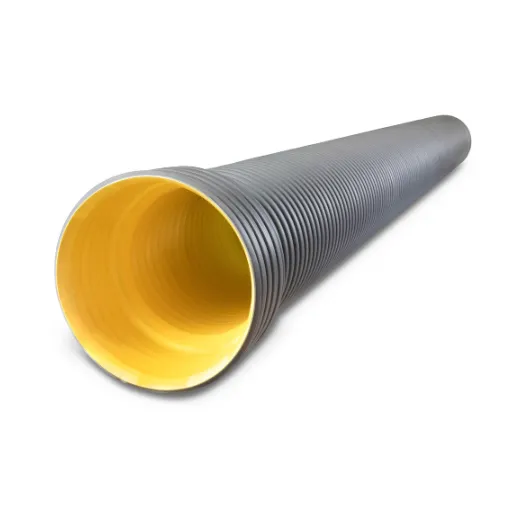When it comes to durable, efficient, and cost-effective plumbing solutions, PEX pipes have revolutionized how systems are installed and maintained. Specifically suited for underground applications, PEX piping has become a preferred choice for both residential and commercial projects due to its flexibility, corrosion resistance, and long lifespan. This article explores the essentials of installing PEX piping underground, highlighting its advantages and the critical maintenance practices that ensure performance over time. Whether you’re a contractor, homeowner, or engineering professional, understanding the capabilities and care requirements of PEX piping is key to making informed decisions for your next plumbing project. Read on to uncover what makes PEX pipe an optimal solution for underground infrastructure.
Understanding PEX Pipe for Underground Applications
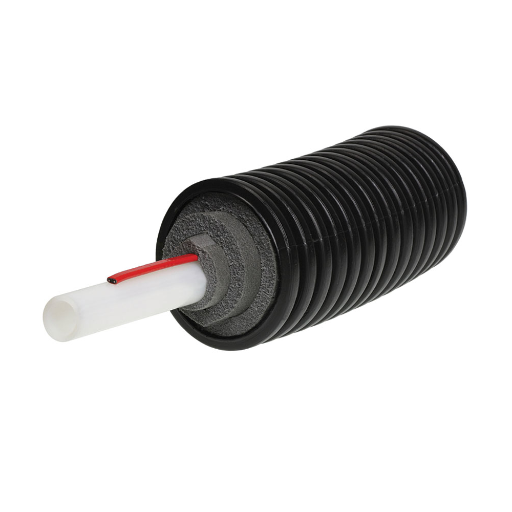
What is PEX Pipe?
PEX pipes, or cross-linked polyethylene pipes, are flexible and durable piping materials used in modern plumbing and underground applications. The process of making PEX piping involves cross-linking of polyethylene molecules to increase the strength, chemical resistance, thermal stability, and durability of the material. There are different types of PEX piping, with PEX-A, PEX-B, and PEX-C being the main classes, differing mainly in their manufacturing process and degree of flexibility.
Since PEX pipe can be installed in many circumstances, one of the major benefits is its underground installation potential. Being flexible, it goes around obstacles with only a few fittings, and thus has fewer weakening points in the system. It resists corrosion and scaling that would plague typical metal piping. The material is suitable for hot and cold water applications, well within the temperature ranges found in residential, commercial, and industrial systems. This makes it the best solution for plumbing systems that demand durability and dependability.
Since the pipes are light, they are easy to install with several connection systems-the crimp, the clamp, and the expansion fittings are a few. The design is freeze-resistant: the material can expand slightly if water inside the pipe freezes, which greatly minimizes the likelihood of bursting. However, like any other infrastructure material, it has to be well-installed and taken care of if the PEX pipes are to perform well and last long. If used underground, PEX must be installed according to the manufacturer’s instructions as well as local codes to ensure adequate protection against harmful UV rays, sharp objects, and extreme pressures.
Benefits of Using PEX for Underground Water Supply
- Resistance to Corrosion and Scale Buildup: Depending on the type of metal pipes, unlike the pipes made from metals such as copper or galvanized steel, PEX pipes do not corrode or accumulate scale. Therefore, the sanitation of water is improved, and the need for expensive upkeep with time also gets minimized, thus providing longevity to water delivery systems.
- Flexibility and Freeze Resistance: PEX piping is highly flexible, requiring fewer fittings, and thus enhancing ease of installation around bends and obstacles. Moreover, this ability to expand and contract will make the pipes less vulnerable to bursting in freezing conditions, an advantage it has over rigid materials like PVC or metals.
- Durability and Longevity: PEX is highly resilient to environmental conditions, such as temperature extremes and pressure. It has been proven to have a life of more than 50 years with normal operating conditions, hence a reasonably secure product for underground installations for long periods of time with a lower rate of degradation.
- Cost-Efficiency: Being a lightweight pipe and easy to install, the decision to use PEX for plumbing is very much matched up on price compared to using conventional pipe materials. Installers tend to decrease labor costs immensely while constructing efficiently, and a lesser number of connections keeps the material cost to a bare minimum.
- Chemical Resistance: PEX pipes exhibit high chemical resistance to those usually found in soil and water. This feature thus makes them suitable for underground applications where they tend to be exposed to such elements. The material also prevents contamination, thus aiding in preserving the integrity of potable water systems.
The above traits, backed with intense testing and endorsed by industry standards, make PEX one of the top choices for underground water supply systems for both residential and commercial applications.
Key Features of Underground Insulated PEX Pipe
- Durability and Longevity: Insulated PEX pipe buried underground is expected to resist harsh conditions arising from fluctuating temperatures, high pressure, and chemical contaminants usually present in soil and water. The cross-linked polyethylene (PEX) provides great resistance against cracking, corrosion, and degradation of materials and, therefore, can have a service life of more than 50 years if installed and maintained well.
- Thermal Efficiency: Due to the superior insulating jacket, underground insulated PEX pipe prevents heat loss or gain during fluid transport. It is used in instances that demand optimum thermal control, such as hydronic heating and geothermal systems. The insulation on the pipe thus provides advantages, saving energy by sustaining temperature over large distances.
- Ease of Installation: The flexibility of PEX piping reduces the need for additional fittings and joints, so the installation procedure becomes easier for complex layouts or confined spaces. Besides this, insulated PEX pipes are extremely light and can be supplied pre-assembled in coils, bringing down the time for labor considerably in contrast to other rigid types. The flexibility allows a simple movement around obstacles without loss of structural strength.
- Compatibility and Versatility: Underground insulated PEX pipes can integrate with different connection systems and can be utilized for water supply, hydronic heating, chilled water distribution, and even industrial process fluid transport. Their adaptability ensures they stand to meet the requirements of all manner of residential, commercial, and industrial projects.
- Environmental Resilience: PEX piping is highly resistant to freezing and thawing cycles, as the elastic properties permit the material to expand and contract without fracture. Also, the insulation layer prevents condensation and environmental damage to the system, ensuring stability in every season of both hot and cold climates.
These attributes thus establish underground insulated PEX pipe as one of the most relied on and efficient solutions to modern infrastructure needs. Its strength, thermal efficiency, and endurance make it an excellent and preferred choice of engineers and contractors.
Installation Guidelines for Underground PEX Pipe
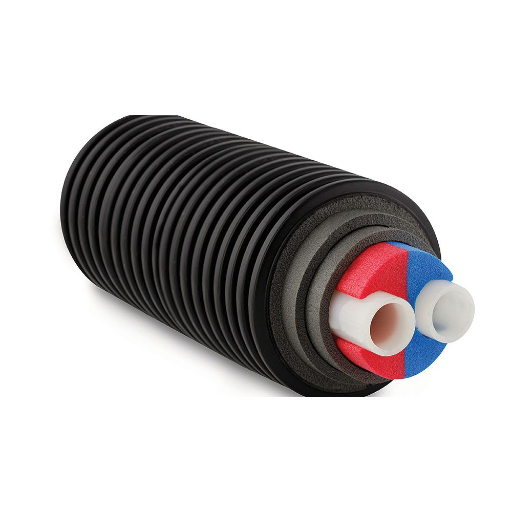
Choosing the Right Trench Depth
Correct trench depth becomes another nice attribute to highlight in installing underground insulated PEX pipe, which will directly affect system performance and longevity. It is interesting to note how many other considerations must be weighed when considering the depth of a trench, including the local frost lines, soil content, and load-bearing requirements.
Typically, for installation in freezing temperature conditions, trenches should always be dug slightly below frost lines by about 6-12 inches, allowing a freedom from freeze and maintaining proper thermal insulation. Usually, the thermal protection will keep the pipe from direct thermal shock incidents puncturing its integrity. The trench also should bear loads from the external sources-traffic or heavy equipment- and soil cover adequately under these external loads to diminish mechanical stress on the pipe. Generally, for home installations, a total trench depth of between 24 and 48 inches is recommended, but site variables may further dictate trench depth.
Soil compaction has also to be performed thoroughly along the trench bottom. The new engineers were told to use granular materials for backfilling-sand or fine gravel, to make a bed for the pipe, giving uniform support for the entire pipeline. This prevents uneven pressure among segments of the pipe, which could go against the deformation of the pipe or better-mentioned stress and material fatigue. Looking into these during design and excavation allows for trench depth adjustment to provide the best performance and reliability for the underground PEX system.
Techniques for Joining PEX Tubing
There are a number of joining methods for PEX tubing, all of which provide some degree of advantage according to the application, installation requirements, and the system specifications. Common methods are crimp, clamp, push-fit, expand, and compression fitting.
- Crimp Fitting: A crimp fitting uses a copper ring that is crimped over PEX tubing using the crimping tool. The ring tightly seals over the fitting barb to prevent leaks. The calibration of the crimping tool, however, must be perfect; otherwise, incorrectly crimped connections could lead to a system failure. Crimp fittings are sometimes thought of as the most economical permit and also a time-honored method for permanent installations.
- Clamp Fittings: Working much like the crimp system, clamp fittings use a stainless steel clamp ring. A special clamp tool tightens the ring around the tubing. This method allows a bit more flexibility when used in tight spaces and ensures a very secure connection. An additional advantage is that stainless steel has good corrosion resistance in high-humidity environments or when exposed to water.
- Push-Fit Connection: Push-fit fittings, in general, enable fast, tool-free assembly by permitting the PEX tubing to be pushed right into the fitting. Internal o-rings and stainless steel teeth hold the tubing in place. Push-fit connections might thus be jointly ideal for a quick repair and even considered a temporary installation. Depending on manufacturer specifications, push-fit connections, on the other hand, are often rated for permanent use.
- Expansion Fittings: Expansion fittings work by expanding the PEX tubing with expansion tools. A fitting is then inserted into the expanded tubing, which contracts back around the fitting for a secure seal. This method, for use with PEX-A tubing, offers the strongest joint with a minimum of flow restriction through the joint.
- Compression Fittings: These compression fittings use a threaded nut and ferrule to clamp the PEX tubing onto a fitting. This method requires very careful torque to achieve a seal and is commonly used in very special applications such as transitions between PEX and rigid piping systems.
Each of these joining methods is further optimized by the selection of fittings and tools that conform to ASTM F877 and ASTM F1960 standards in the interest of durability and safety. In making a choice, factors such as water pressure, temperature ratings, and chemical compatibility of the materials must be considered for the sake of system performance and long life. Periodic pressure testing of the installation is also recommended to ensure that all joints maintain their integrity.
Best Practices for Insulating Underground PEX Pipe
Proper insulation of underground PEX pipe is a critical condition for the efficiency of the system to prevent any heat loss, as well as protecting the pipe from external factors like freezing temperatures and soil movements. For achieving the best insulation performance, various aspects and techniques about:
- Use of Closed-Cell Foam or Pre-Insulated Piping Systems: Insulating material such as closed-cell foam or pre-insulated PEX piping systems offers high thermal resistance (R-value) and moisture protection. This insulation material resists water infiltration, which is very important to maintain insulation effectiveness over time, especially in underground scenarios.
- Depth of Installation: The simple rule of putting PEX piping below the frost line helps minimize the risk of freezing. Since the depth of frost varies according to the geographical setting, one may want to consider some local code or soil studies to comply.
- Encapsulation with a Waterproof Membrane: Employ a waterproof barrier or membrane to avoid moisture accumulation within the insulation layer. This layer protects the longevity of both the insulation and the piping system under a range of environmental conditions.
- Proper Drainage Around the Installation Site: To avoid water pooling around the insulated pipe, the trenches should be laid out with a sufficient slope, and drainage materials such as gravel should be used to disperse the water. This helps keep the insulation dry; waterlogged insulation, of course, loses its effectiveness.
- Selection of Insulation Based on Climate and Soil Conditions: Insulation properties, comprising compression strength and temperature resistance, should suit certain climatic and soil conditions. For example, in areas subjected to heavy soil pressures, jackets fabricated from high-density polyethylene (HDPE) on pre-insulated systems provide great protection.
- Monitoring and Maintenance: Although underground PEX is built for durability, it is good to periodically check the inspection chambers or shallow sections for any indications of insulation degradation. This would secure the longevity of the system.
With the implementation of the above-mentioned criteria, professionals can optimally design and maintain reliable and functioning underground PEX piping installations in varying environmental conditions.
Challenges in Burying PEX Pipe Underground
Soil Conditions and Their Impact on Installation
Performance and durability of PEX piping in the ground have been influenced to a great extent by the soil characteristics present. Consideration of various critical parameters such as pH, moisture, compaction, and thermal conductivity is essential when determining the suitability of an installation environment. Highly acidic or alkaline soils, for example, could accelerate the degradation of the protective insulating layers or corrosion of fittings unless unsuitable measures are instituted for their protection. Poor soil compaction could lead to differential settling is a mechanism whereby the concrete supports of the pipe settle differentially relative to one another, thus causing bending and hence an increase in the incidence of mechanical failure.
Soil moisture variability is another critical consideration. The hydrostatic pressure on pipes could be exerted by overly wet soils, and overly dry ones can move or develop cracks that could stress the pipe systems. The thermal conductivity of the soil is in direct relation to system performance in applications like geothermal heating. Soils with high thermal conductivity, e.g., sands or loams, optimize heat transfer; however, energy dissipation in clay-heavy soils is considered poor.
Soil testing should be a key consideration in installation site assessment so professionals can institute preventive measures against potential problems. Where soils are less than acceptable, extra protective measures such as additional shielding materials, trench stabilization, and correct bedding are needed to ensure system integrity in the long run.
Managing UV Exposure During Installation
UV rays can play a crucial role in the degradation of materials used in outside installations, mostly when these materials are polymers or synthetic materials. Longer durations under UV radiation spell every sort of degradation for the material, including discoloration and brittleness, and the loss of mechanical strength. For example, polyethylene as a piping material is susceptible to oxidative degradation, which can affect it unless adequately protected.
To mitigate such hazards, an installer should prefer materials or coatings that are UV resistant. Also, many materials are perpetually made with stabilizers such as carbon black or some UV-blocking additives so that they offer more resistance against UV rays. Meanwhile, some tinctorial measures like tarpaulins can be utilized while transporting to storage in order to curtail UV exposure before being installed.
Even knowledge of the project timeline and geographical location will be of great essence, for the intensity of UV varies with latitude, altitude, and seasonal changes. Evaluating satellite monitoring data and regional UV indexes will then yield useful information on when peak exposure occurs in order to adequately prepare for outdoor-level installation projects. Recording of such takes and monitoring long-term performance will ensure rights to industry standards, hence further extending the lifespan of the installed systems.
Maintenance Tips for Underground PEX Pipe
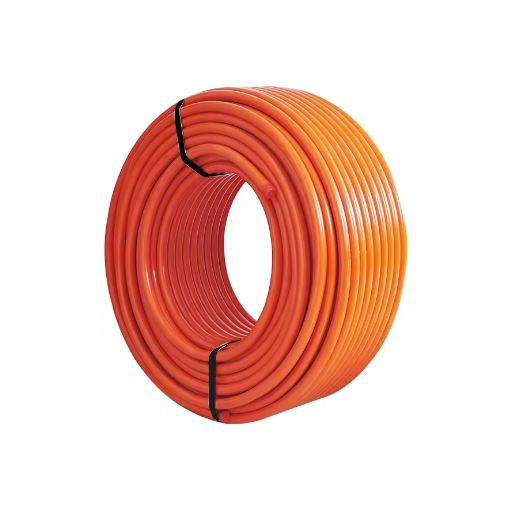
Inspecting for Damage and Wear
Regular inspection of the underground PEX piping system is a must to maintain system integrity and assure long-term usability. PEX pipe can be made vulnerable over the years from external factors such as movements of soil, chemical effects, and being subjected to mechanical stress due to installation or nearby construction work. A thorough visual examination should be done from time to time in accessible areas such as connection points and manifolds, looking for early visible forms of damage like cracks, abrasions, or deformation. Similarly, an unusual increase or decrease in water pressure usually hints at the presence of hidden leaks or structural weaknesses in the system.
Acoustic leak detection and thermal imaging technologies can significantly improve the accuracy of such inspections. Acoustic devices detect subtle sounds produced by water escaping through tiny fissures, focusing particularly on deep, difficult-to-access areas where a hands-on inspection would prove impractical. Thermal imaging, on the other hand, finds temperature anomalies resulting from water leaks even through dense layers of soil or concrete. Both technologies provide highly efficient and non-invasive ways to assess pipe health and reduce unnecessary excavations.
The documentation of inspection shall be considered necessary and is one step towards building a comprehensive maintenance record. In the report, the location, type, and severity of damage should be indicated, together with any repair carried out. While comparing past reports with the present records, some recurring problems could be revealed, which could indicate systemic design defects or the environment’s influence. Adhering to the elaborate inspection procedure will, therefore, help a facility manager and technicians to ensure that underground PEX piping systems conform to industry standards and will remain capable of delivering on performance, time after time.
Preventing Blockages in Underground Water Lines
Preventing blockages in underground water lines is a technical challenge with a proactive solution that involves selecting advanced materials, employing modern engineering techniques, and adhering to routine maintenance schedules. Blockages develop with the buildup of sediments, corrosion within the pipes, invading tree roots from outside, or the collection of unwanted debris. One of the most essential measures in combating these issues is an appropriate choice of piping materials that include corrosion-resistant polyethylene and cross-linked polyethylene (PEX), which resist deterioration through aging processes.
Apart from that, one can minimize the introduction of unwanted particulate matter capable of accumulating and obstructing flow by installing high-precision filtration and straining mechanisms at the water intake points. Regular hydraulic flow analysis can detect possible early blockages by evaluating pressure changes in the system and velocities of flow. Upon detection of blockages, some successful measures in clearing buildup include hydrojetting and mechanical rodding.
Trenchless technology, such as CIPP lining and pipe bursting methods, is able to address structural problems for existing systems while minimizing excavation and external disruption. Finally, digital sensors and telemetry form the basis for real-time monitoring technologies that give valuable data for the fast identification of anomalies and hence speed up blockages response. By adopting these advanced techniques supported by constant evaluation of the system, engineers and facility managers can secure the delivery that faces fewer blockages and inefficiencies in time.
Effective Repair Techniques for Leaks
Leaks, if left unattended, may jeopardize the integrity and efficiency of fluid transportation systems. Such repairs require certain prerequisites, primarily accurate leak localization. Leak sites can be localized efficiently using ultrasonic leak detectors or thermal imaging cameras. These devices can conduct precise diagnostics and do not require additional invasive procedures that would further disrupt the system.
Once located for repair, the method varies according to the nature and severity of the leak. A slight leak may be resolved after the temporary application of pipe clamps or epoxy sealants, so that in the meantime, more permanent measures can be carried out. More serious damage, on the other hand, should be rectified by dismantling and replacing the affected section with materials identical to those specified for the whole system, ensuring upon this the longevity and compliance by standards.
The advent of recently discovered innovations in techniques, such as these trenchless pipe repair methods that include cured-in-place pipe (CIPP) technology, has changed the landscape forever. The resin-soaked liner is placed inside the existing pipe, hardening to form a new pipe that is smooth and seamless within the existing infrastructure. Trenchless methods are great for conserving excavation works and the environment around, especially in an urban setting.
Another important advancement has been in smart sensor technology, which now makes it possible to perform predictive maintenance, thus allowing early leak detection before visible damage occurs. By utilizing such smart repair methods and enforcement of rigorous maintenance schedules will thus help extend generation life, avoid needless water loss, and cut down on cost over the long haul.
Comparing PEX with Other Piping Materials
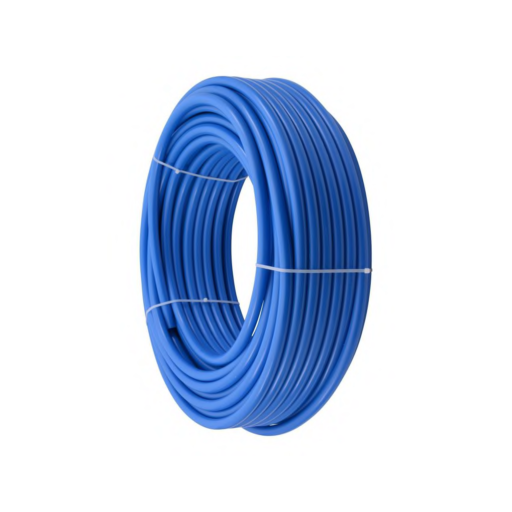
Cost Analysis: PEX vs PVC, Copper, and CPVC
While PEX is more affordable and flexible, PVC is cheaper but less durable, copper is very pricey and much long-lasting, and CPVC comes in at a moderate price and offers fair heat resistance.
|
Material |
Cost |
Durability |
Flexibility |
Heat Resistant |
Corrosion |
Ease of Install. |
|---|---|---|---|---|---|---|
|
PEX |
Low |
High |
High |
High |
Resistant |
Easy |
|
PVC |
Very Low |
Moderate |
Low |
Low |
Resistant |
Moderate |
|
Copper |
High |
Very High |
Low |
Very High |
Prone |
Difficult |
|
CPVC |
Moderate |
High |
Low |
High |
Resistant |
Moderate |
Lifespan and Durability Comparisons
Regards durability, PEX lasts for 50+ years; PVC comes next with 25-40 years, in the third position is copper with the highest durability, 50+ years, and following it is CPVC with 40-50 years of durability.
|
Material |
Lifespan |
Durability |
Corrosion |
Freeze Resist. |
Flexibility |
|---|---|---|---|---|---|
|
PEX |
50+ years |
High |
Resistant |
High |
High |
|
PVC |
25-40 years |
Moderate |
Resistant |
Low |
Low |
|
Copper |
50+ years |
Very High |
Prone |
Low |
Low |
|
CPVC |
40-50 years |
High |
Resistant |
Moderate |
Low |
Environmental Impact of Different Pipe Materials
The environmental impact owing to pipe materials varies widely according to their manufacturing processes, energy requirements, recycling potential, and pollution potential.
- PEX (Cross-Linked Polyethylene): The production of PEX necessitates non-renewable petroleum resources and includes chemical processes that cause emissions in the atmosphere. However, being lightweight compared to copper and heavier materials, PEX requires less transportation energy. Due to the cross-linked nature of PEX, recycling of these pipes is seldom practiced, thereby affecting their environmental sustainability.
- PVC (Polyvinyl Chloride): PVC, being a fossil fuel-based product, requires energy-intensive manufacturing processes, contributing to greenhouse gas emissions. Furthermore, the production of PVC releases dangerous by-products such as dioxins, which are deleterious to both the environment and human health. PVC is recyclable, but such processes are rare, thereby posing a difficulty in waste management.
- Copper: From extraction to processing, copper pipes are known to have of relatively high environmental impact. Mining for copper requires large quantities of energy, destroys habitats, and pollutes water through tailings discharge and the use of chemicals. Copper, however, is very well recycled, and a good fraction of it is recycled, thus somewhat alleviating the initial environmental impacts.
- CPVC (Chlorinated Polyvinyl Chloride): CPVC has several issues, the production and disposal of which are similar to those of PVC because it is also made from a chlorinated fossil fuel. Its recycling is low in feasibility, and improper disposal may have a negative effect on the environment. However, CPVC, being very durable, requires fewer replacements, which may offset its initial adverse effects in the long term.
A holistic perspective on the life cycle of these materials, starting from extraction, manufacturing, use, and disposal, clearly highlights the fact that recyclability, durability, and transport efficiency are some of the factors that contribute majorly to the overall environmental impact of these materials. Systems designed with sustainable raw materials or those that consider renewable alternatives will go a long way in fostering environmental sustainability in the plumbing and construction industries.
References
Frequently Asked Questions (FAQ)
Q: What is the ideal choice for underground applications?
A: PEX pipe underground is often considered the ideal choice due to its versatility and resistance to rust corrosion. It can withstand extreme temperatures, making it suitable for various underground uses.
Q: How deep should PEX pipe be installed underground?
A: Generally, PEX pipe should be installed at least 24 inches deep to ensure optimal performance and protection against weather conditions and potential damage from the surrounding environment.
Q: Can PEX pipe be used for hot water applications underground?
A: Yes, PEX pipe is suitable for hot water applications. Its ability to maintain water quality while withstanding heat makes it a reliable choice for underground hot water systems.
Q: How does the diameter of PEX pipe affect its performance underground?
A: The diameter of PEX pipe plays a crucial role in ensuring optimal performance. A larger diameter, such as 1 inch, can facilitate better water flow, especially for specific projects that require higher capacity.
Q: What are the benefits of using PEX for underground installations?
A: Using PEX for underground installations provides several benefits, including resistance to rust, lightweight material for easier handling, and lower costs, ultimately saving money on installation and maintenance.
Q: What should I consider during the installation process of PEX pipe underground?
A: During the installation process, it is essential to ensure the PEX pipe is installed correctly to avoid degradation over time. Following local codes and guidelines will also contribute to the reliability of the system.
Q: Is there free technical support available for PEX pipe underground installations?
A: Yes, many suppliers offer free technical support and free design services to assist with PEX pipe underground installations, ensuring that you meet your specific needs without hassle.
Q: How does PEX pipe perform in extreme weather conditions?
A: PEX pipe is designed to withstand extreme weather conditions, making it a dependable option for underground use. It does not corrode like steel, thus maintaining its integrity even in harsh environments.
Q: Can PEX be used in conjunction with an outdoor furnace?
A: Absolutely. The use of PEX with an outdoor furnace is quite common, as it can efficiently transport hot water without the risk of corroding the steel, ensuring optimal performance in heating applications.



